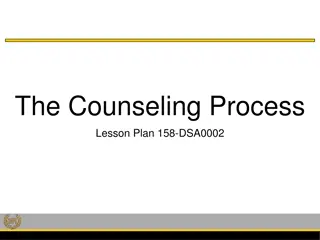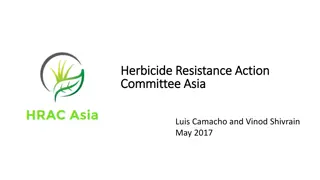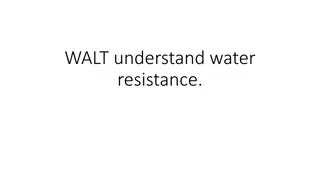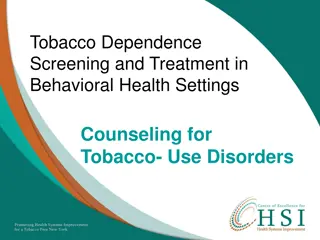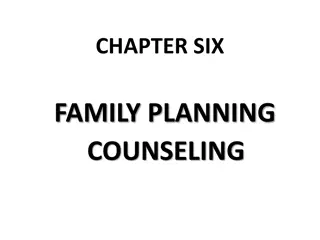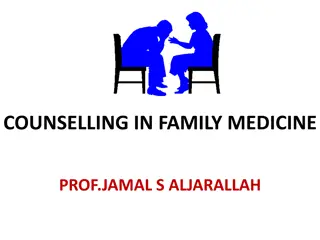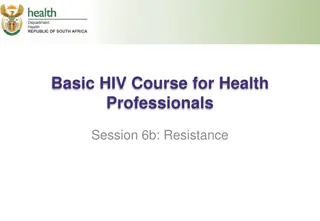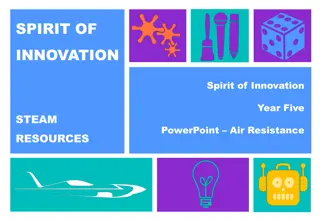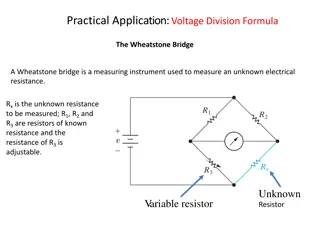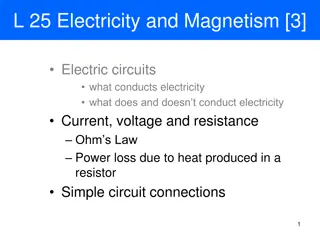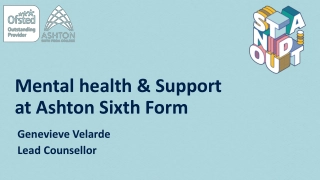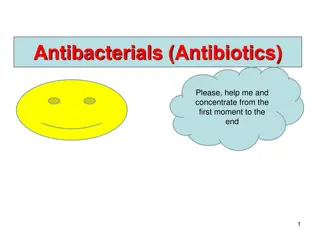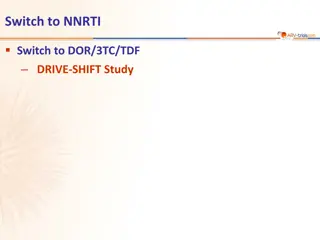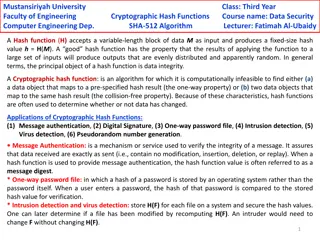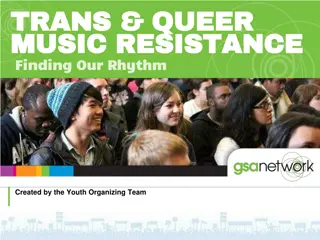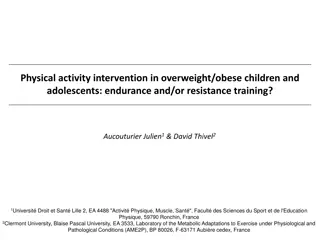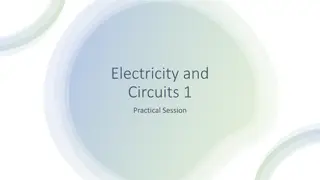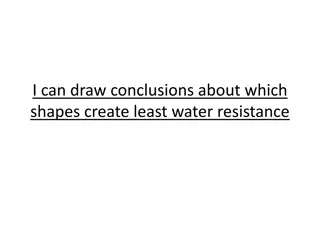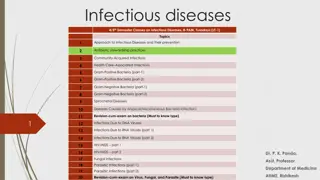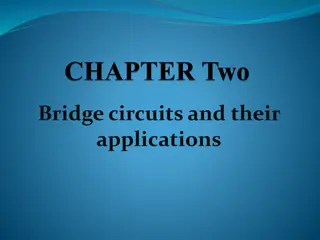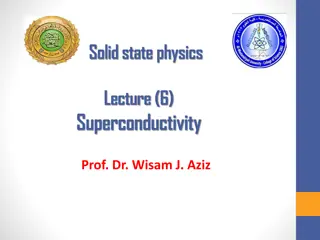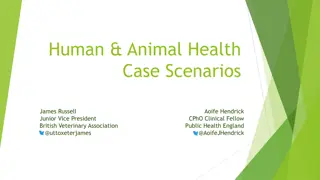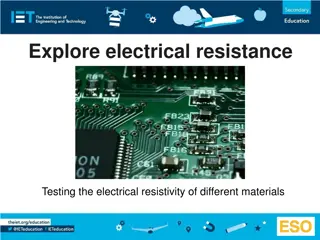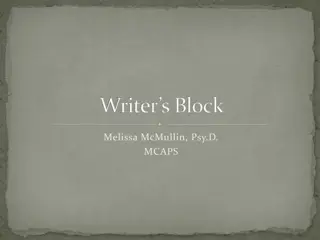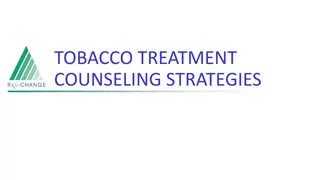Dealing with Resistance in Counseling: Techniques and Strategies
Understanding resistance in counseling is crucial for effective communication and rapport building. This module explores various forms of resistance, counselor behaviors that elicit resistance, and ways to diminish resistance. Learning to respond differently to resistance can lead to valuable feedback and pave the way for positive change talk.
Download Presentation

Please find below an Image/Link to download the presentation.
The content on the website is provided AS IS for your information and personal use only. It may not be sold, licensed, or shared on other websites without obtaining consent from the author. Download presentation by click this link. If you encounter any issues during the download, it is possible that the publisher has removed the file from their server.
E N D
Presentation Transcript
Responding to Resistance Module 13 Blake Beecher, PhD Eastern Washington University Adapted with permission from Anjali Nandi
Learning Objectives 1. Increase knowledge about Rolling with resistance, and Phase II of MI 2. Demonstrate ability to use a rolling with resistance technique in a peer role play 3. Values Focus instead of symptom focus
Resistance What is resistance? How is resistance expressed? Negating Blaming, disagreeing, excusing, minimizing, unwillingness to change Ignoring Inattention, sidetracking, nonanswer Arguing Challenging, discounting, hostility Interrupting
Resistance (Contd) Counselor behaviors that elicit resistance Arguing for change (the trap of taking sides) Assuming the expert role/claiming preeminence Labeling Being in a hurry Criticizing, shaming, or blaming
Resistance (Contd 2) Resistance is a product of the interpersonal relationship Hence, there are things we can do to diminish resistance Resistance is a signal to respond differently, it is valuable feedback
Change Talk Generally falls into one of these four categories: Disadvantages of the status quo Advantages of change Optimism for change Intention to change
Change Talk (Contd) Disadvantages of the status quo I can see that in the long run, this is going to do me in if I don t make a change. I am ruining my family life. Advantages of change My boys would like it. They re always after me to quit. Probably I d feel a lot better. At least it would get the courts off my back.
Change Talk (Cont d -2) Optimism About Change I think I could probably do it if I decided to. I did quit smoking a few years ago. That was tough, and it took a few tries, but I did it. My family would be there to support me. Intention to Change I definitely don t want to keep going the way I have been. I ve got to do something.
Handling Resistance Simple reflection Amplified reflection Double-sided reflection Reflective Responses Shifting focus Coming Alongside Agreement with a twist Reframing Emphasizing personal choice/control Disclosing feelings Strategic Responses
Reflective Responses S imple reflection A mplified reflection D ouble-sided reflection
Simple Reflections Simple Reflections Repeating, rephrasing, paraphrasing, reflection of feeling
Amplified Reflection Exaggerated to encourage some retreat Client:I couldn t just give up drinking. What would my friends think? Interviewer:You couldn t handle your friends reaction if you quit.
Double-Sided Reflection Captures both sides of the ambivalence Client:Okay, maybe I ve got some problems with gambling, but it s not like I m addicted to it. Interviewer: You see that your gambling is causing problems for you and your family, and it s also important that people not think of you as some kind of addict.
Strategic Responses S hifting focus C oming Alongside A greement with a twist R eframing E mphasizing personal choice/control D isclosing feelings
SHIFTING FOCUS We ve talked about who required you to come here; now let s talk about
COMING ALONGSIDE (Paradox) It sounds like the pros of using still far outweigh the cons. So it may be that you decide smoking is something that you don t want to give up
Agreement with a Twist Reflection with a REFRAME
Reframing Acknowledges validity of client observations but offers new meaning or interpretation (useful with resigned client)
EMPHASIZING PERSONAL CHOICE/CONTROL It really is your choice about what you do in this situation You re right, no one can force you to be here or to change. No one can make you do this. The decision is yours I m here to help you in whatever way you see as helpful.
DISCLOSING FEELINGS I m getting a stuck feeling as we sit here. And I m wondering whether you feel the same? When stuck with a resistant client, sometimes it helps for the counselor to acknowledge that he/she feels stuck. This can help to normalize the situation and creates potential for some movement.
Handling Resistance (Cont d) Simple reflection Amplified reflection Double-sided reflection Reflective Responses Shifting focus Coming Alongside Agreement with a twist Reframing Emphasizing personal choice/control Disclosing feelings Strategic Responses
Resistance skills L I S T E N E R S CLIENT INTERVIEWERS
MI ACRONYMS MI ACRONYMS D D evelop D D iscrepancy E E express E E mpathy A A mplify A A mbivalence R R oll w/ R R esistance S S upport S S elf-Efficacy Q Q uestion/Answer P P remature Focus C C onfrontation B B laming E E xpert L L abeling O O pen Questions A A ffirmations R R flections S S ummarizations D D esire for status quo I I ability to change R R easons for status quo N N eeds for status quo S S imple Reflections A A mplified Reflections D D ouble-sided Reflections S S hift Focus C C ome Alongside A A gree w/ a Twist R R eframe E E mphasize Personal Control D D isclose Feelings I I mportance Ruler Q Q uery Extremes L L ooking back/ahead E E vocative Questions D D ecisional Balance G G oals & Value Exploration E E laboration D D esire A A bility R R easons N N eeds C C ommitment
MI ACRONYMS (Contd) MI ACRONYMS (Cont d) D D D D E E E E A A A A R R R R S S S S Q Q P P C C B B E E L L O O A A R R S S D D I I R R N N R E S I S T A N C E R E S I S T A N C E S S A A D D I I Q Q L L E E D D G G E E S S C C A A R R E E D D D D A A R R N N C C O M O M M M I T M E N T I T M E N T
Credits This module was originally developed by Anjali Nandi of the Justice System Assessment and Training Center. It was supplemented and refined for this audience.
References 1. Center for Substance Abuse Treatment. (1999). Enhancing Motivation for Change in Substance Abuse Treatment. (Treatment Improvement Protocol (TIP) Series, No. 35.) Rockville, MD: Substance Abuse and Mental Health Services Administration. Retrieved from: http://www.ncbi.nlm.nih.gov/books/NBK64967/ 2. Miller, W.R. & Rollnick, S. (2002). Motivational interviewing (2nd ed.): Preparing people for change. New York: Guilford Press.


